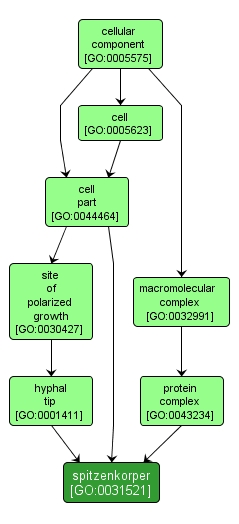GO TERM SUMMARY
|
| Name: |
spitzenkorper |
| Acc: |
GO:0031521 |
| Aspect: |
Cellular Component |
| Desc: |
Structure within the hyphal tip of filamentous fungi that acts as an organizing center for hyphal tip growth; may function to supply vesicles to the elongating tip and/or to organize cytoskeletal microfilaments. |
|

|
INTERACTIVE GO GRAPH
|














